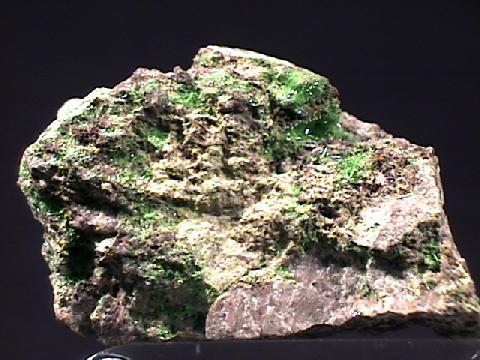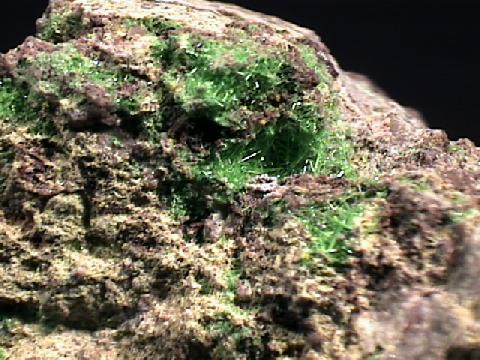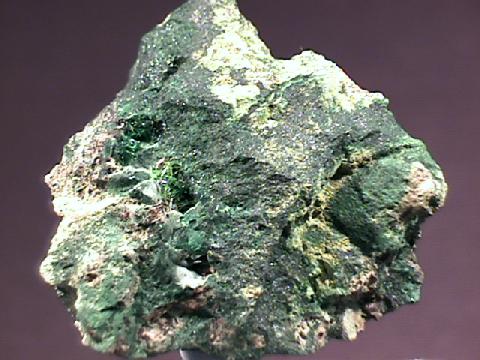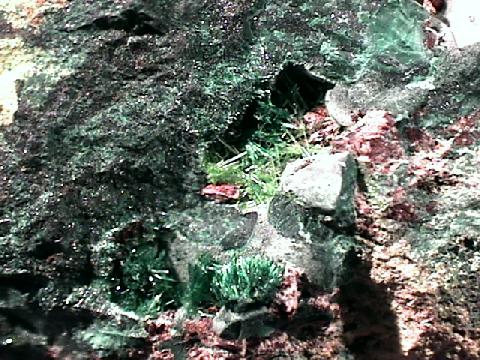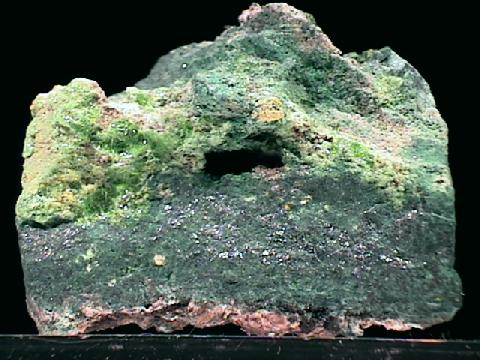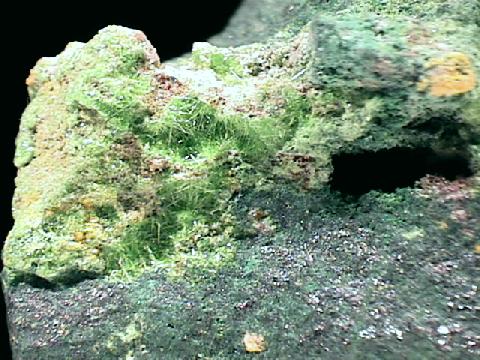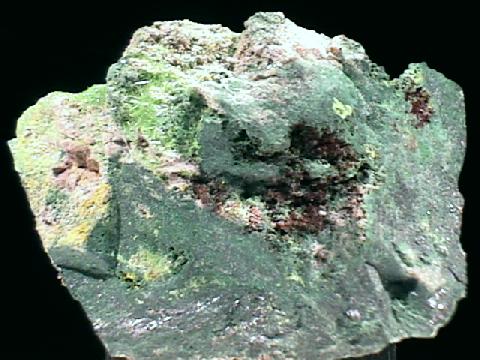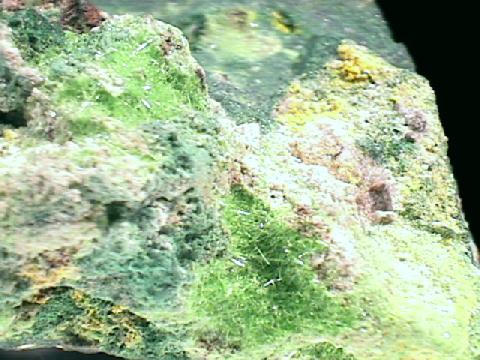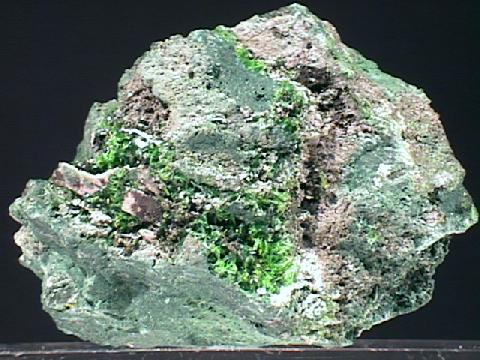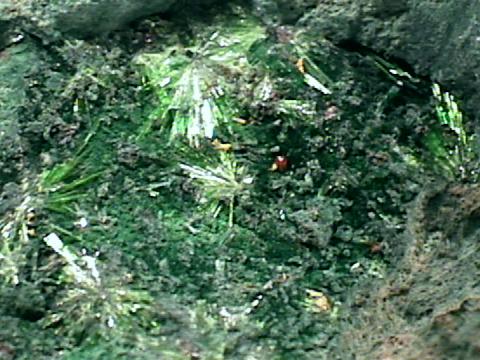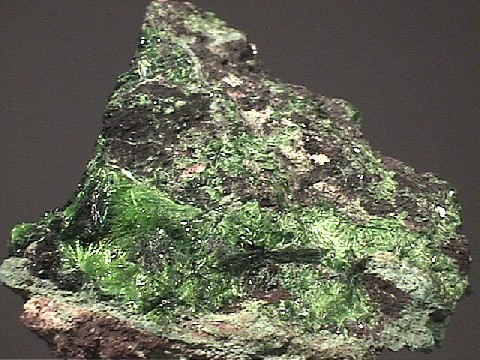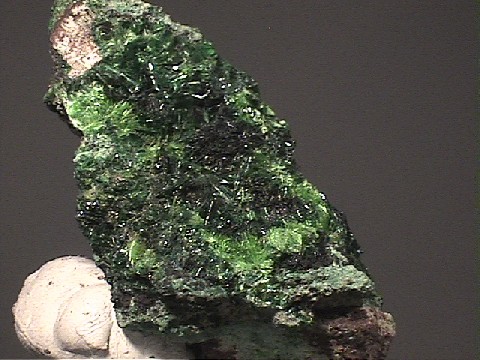 THE MINERAL CUPROSKLODOWSKITE
THE MINERAL CUPROSKLODOWSKITE
- Chemistry: Cu(UO2)2Si2O7 - 6H2O, Hydrated Copper Uranyl Silicate.
- Class: Silicates
- Subclass: Nesosilicates
- Uses: mineral specimen and very minor ore of uranium
Specimens
Cuprosklodowskite is a rare uranium mineral that formed from the oxidation of copper and uranium bearing minerals. Found in good crystals only at one mine at the world famous copper and uranium mines of Shaba, Zaire. The Musonoi Mine produces the worlds supply of the finest cuprosklodowskite specimens. Sklodowskite and uranophane are two closely related minerals that have similar chemistry, structure and crystal habits. Cuprosklodowskite's bright green velvety tufts of hair-like crystals are very attractive and make an impressive mineral specimen. With its rarity and beauty, cuprosklodowskite is much sought after by rare mineral collectors. Remember, this is a radioactive mineral and should be stored away from other minerals that are affected by radioactivity and human exposure should be limited.
PHYSICAL CHARACTERISTICS:
- Color is dark green.
- Luster is vitreous to silky.
- Transparency: Crystals are transparent to translucent.
- Crystal System: Triclinic; bar 1
- Crystal Habits are typically fibrous tufts and crusts. Also acicular crystals in radial aggregates.
- Cleavage: perfect in one direction.
- Hardness is 4.
- Specific Gravity is approximately 3.8 (above average for translucent minerals)
- Streak is green.
- Associated Minerals are uraninite,
dioptase,
sklodowskite,
Uranophane and
brochanitite . - Other Characteristics: Radioactive and fluorescent.
- Notable Occurrences include Musonoi Mine, Shaba, Zaire; Amelal, Morocco and San Juan Co., Utah.
- Best Field Indicators are crystal habit, color, locality, radioactivity and fluorescence.

